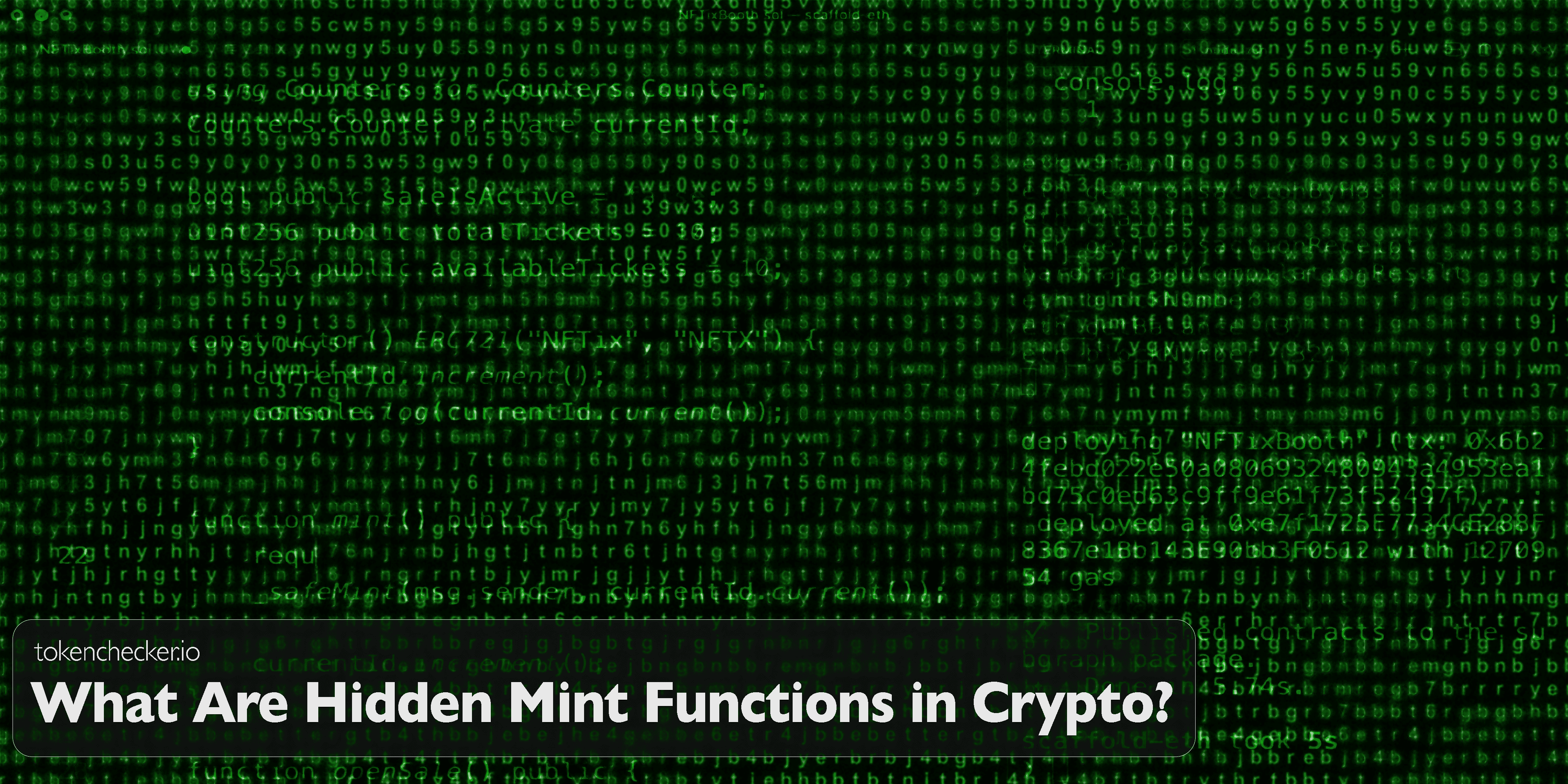
What Are Hidden Mint Functions in Crypto?
Introduction
Hidden mint functions are one of the most dangerous backdoors embedded in malicious smart contracts. These are not bugs—they are deliberate escape hatches that allow developers to create unlimited tokens at will. If you're holding a token and the developer can mint more behind the scenes, your investment can be destroyed in seconds.
This glossary guide breaks down how hidden mint functions work, why they're so difficult to detect, and how they’ve been used in real scams to wipe out investor value overnight.
What Is a Hidden Mint Function?
Most tokens, especially ERC-20 types, include a `mint()` function. This function is normally restricted to trusted addresses or multisig wallets. It’s how legitimate projects create more supply—whether to reward users, manage inflation, or fund growth. You can read more about them in our guide on the risks of mintable tokens.
A hidden mint function, on the other hand, bypasses all trust. It allows one party—usually the developer—to secretly create tokens without limit and without warning. These tokens often skip typical blockchain logs like `Transfer` events, making detection even harder.
How Scammers Use Them
The hidden mint is one of the main technical tools behind rugpulls and infinite mint attacks:
- In a **rugpull**, the scammer launches a legit-looking token and lures in buyers. When liquidity builds, they mint a massive batch of new tokens and dump them into the pool, draining all real value.
- In an **infinite mint**, attackers exploit logic bugs or permissions to mint endlessly. They crash the token’s price by flooding supply.
- In **sleepminting** (used for NFTs), they mint into someone else's wallet to manipulate provenance, then take the asset back.
These aren't theoretical threats. It happened with Cover Protocol (40 quintillion tokens minted) and Emperor Shiba (where a renamed function tricked auditors).
How They Hide It
Hidden mints are rarely called `mint()` anymore. Scammers rename them with misleading labels like `liquidityFees()` or `safeWithdraw()`. They use smart tricks like:
- **Proxy contracts** to swap malicious logic after launch
- **Complex conditionals** to only trigger minting at certain times
- **Owner-only controls** to limit activation to one wallet
- **Delayed execution** to avoid triggering audits or early suspicion
- **Code splitting** across multiple files and libraries
All of this is designed to fool surface-level audits and make detection nearly impossible for regular users.
How tokenchecker.io Helps
Spotting a hidden mint manually is nearly impossible. That’s why tokenchecker.io scans for:
- Mint functions buried deep in contract logic
- Contracts with unbounded supply or missing validation
- Owner-only privileges tied to inflation or transfer
- Behavioral signs of stealth minting or delayed dumps
- Proxy setups with suspicious upgrade paths
Even if you can’t read Solidity, tokenchecker.io runs deep analysis to catch the most common patterns used in hidden mint scams.
Final Thoughts
A hidden mint function is a ticking bomb. You won’t know it’s there until it’s too late—unless you scan before you invest. Always plug a contract into tokenchecker.io before putting your money into a new project.
If someone controls the supply, they control your outcome. Trustless code only works when it's visible and verifiable.